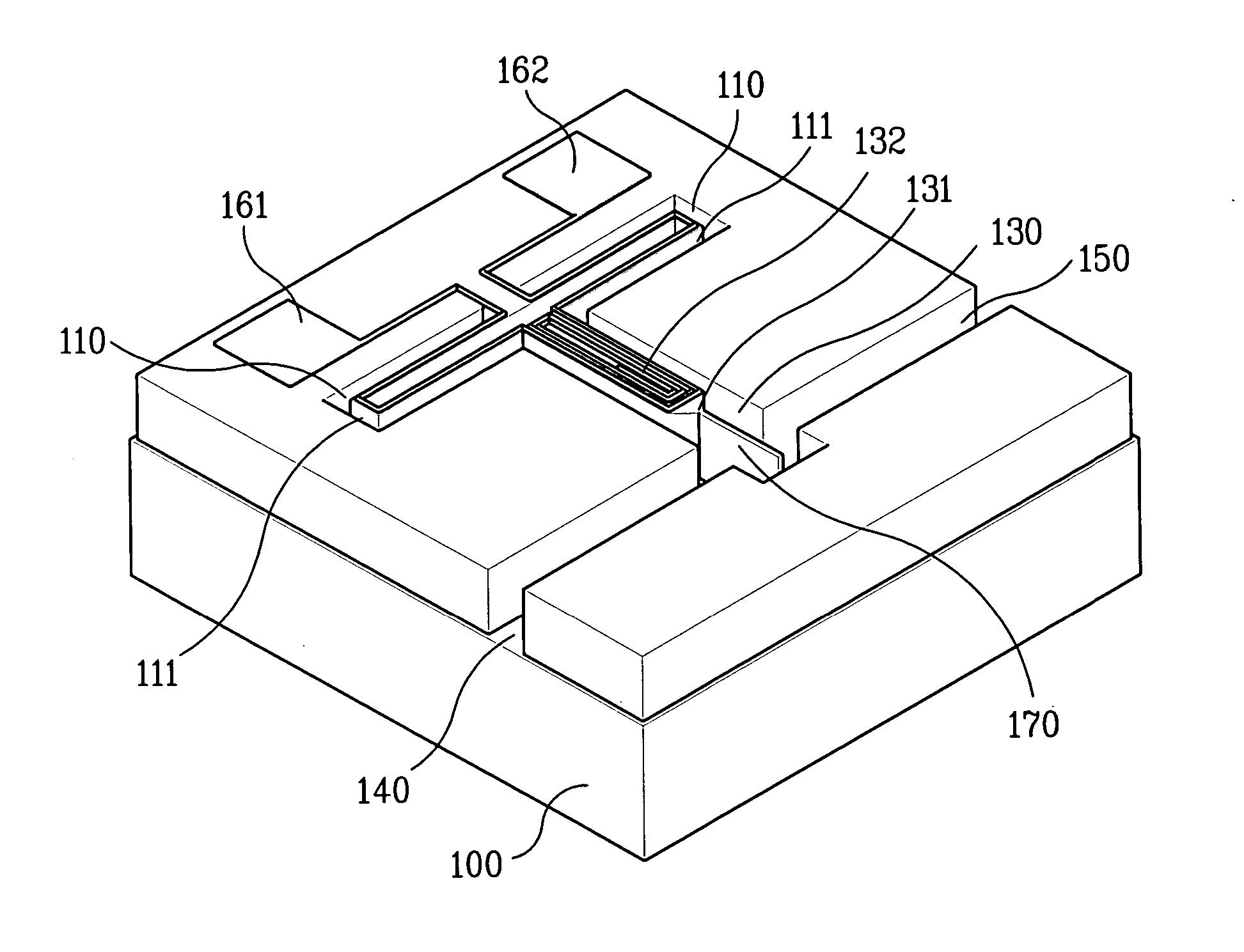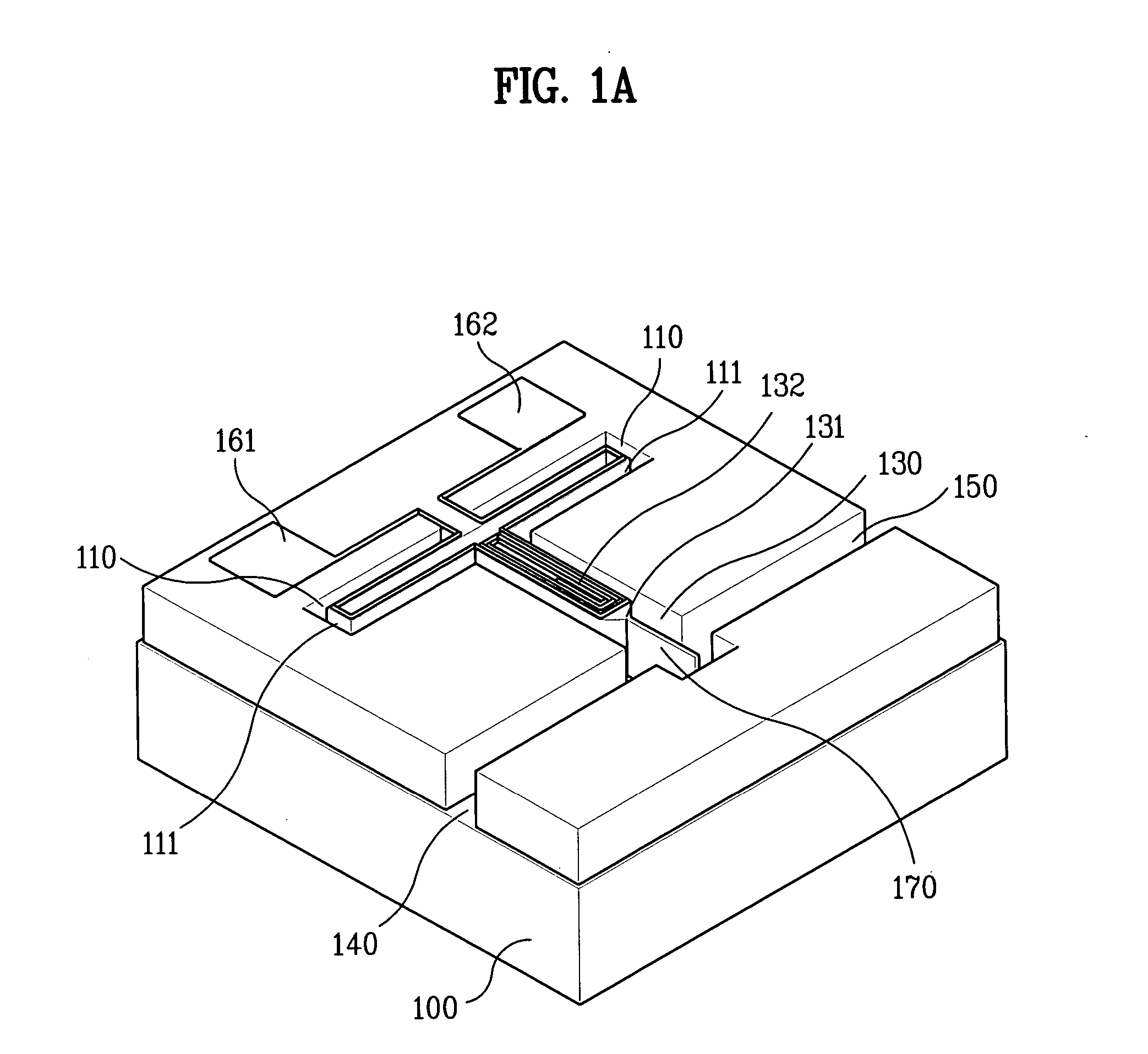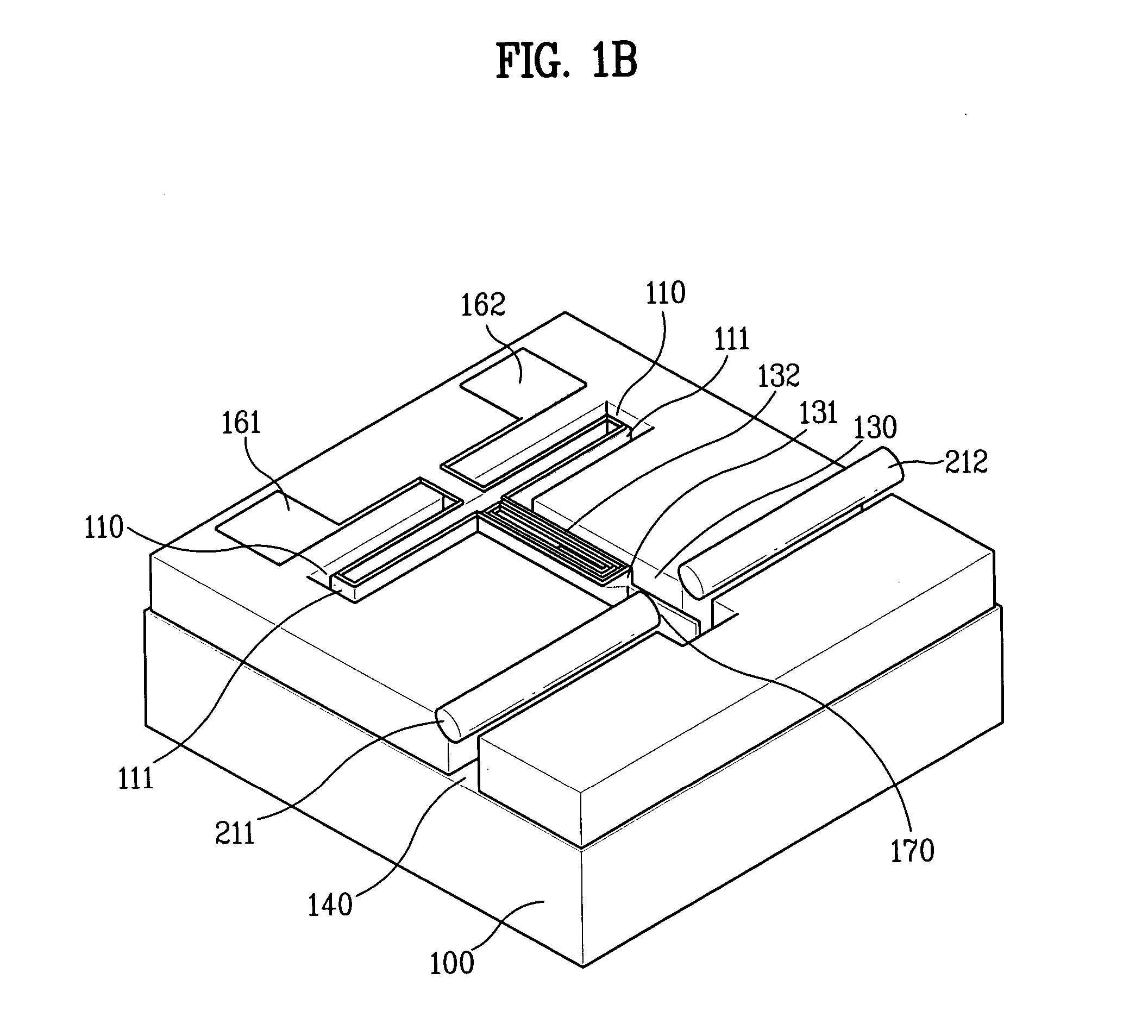Variable optical attenuator
- Summary
- Abstract
- Description
- Claims
- Application Information
AI Technical Summary
Benefits of technology
Problems solved by technology
Method used
Image
Examples
Embodiment Construction
[0034] Reference will now be made in detail to the preferred embodiments of the present invention, examples of which are illustrated in the accompanying drawings. Wherever possible, the same reference numbers will be used throughout the drawings to refer to the same or like parts.
[0035]FIGS. 1A and 1B illustrate perspective views of a variable optical attenuator using an electromagnetic micromirror according to the present invention. And, FIG. 2 illustrates a plane view of the variable optical attenuator using the electromagnetic micromirror according to the present invention.
[0036] More specifically, FIG. 1A illustrates the variable optical attenuator prior to having the optical fiber mounted thereon. And, FIG. 1B illustrates the variable optical attenuator after having the optical fiber mounted thereon.
[0037] Referring to FIGS. 1A, 1B, and 2, the variable optical attenuator includes a substrate 100 having first, second, and third grooves 110, 130, and 150, an elastic body 111, ...
PUM
 Login to View More
Login to View More Abstract
Description
Claims
Application Information
 Login to View More
Login to View More - R&D
- Intellectual Property
- Life Sciences
- Materials
- Tech Scout
- Unparalleled Data Quality
- Higher Quality Content
- 60% Fewer Hallucinations
Browse by: Latest US Patents, China's latest patents, Technical Efficacy Thesaurus, Application Domain, Technology Topic, Popular Technical Reports.
© 2025 PatSnap. All rights reserved.Legal|Privacy policy|Modern Slavery Act Transparency Statement|Sitemap|About US| Contact US: help@patsnap.com



